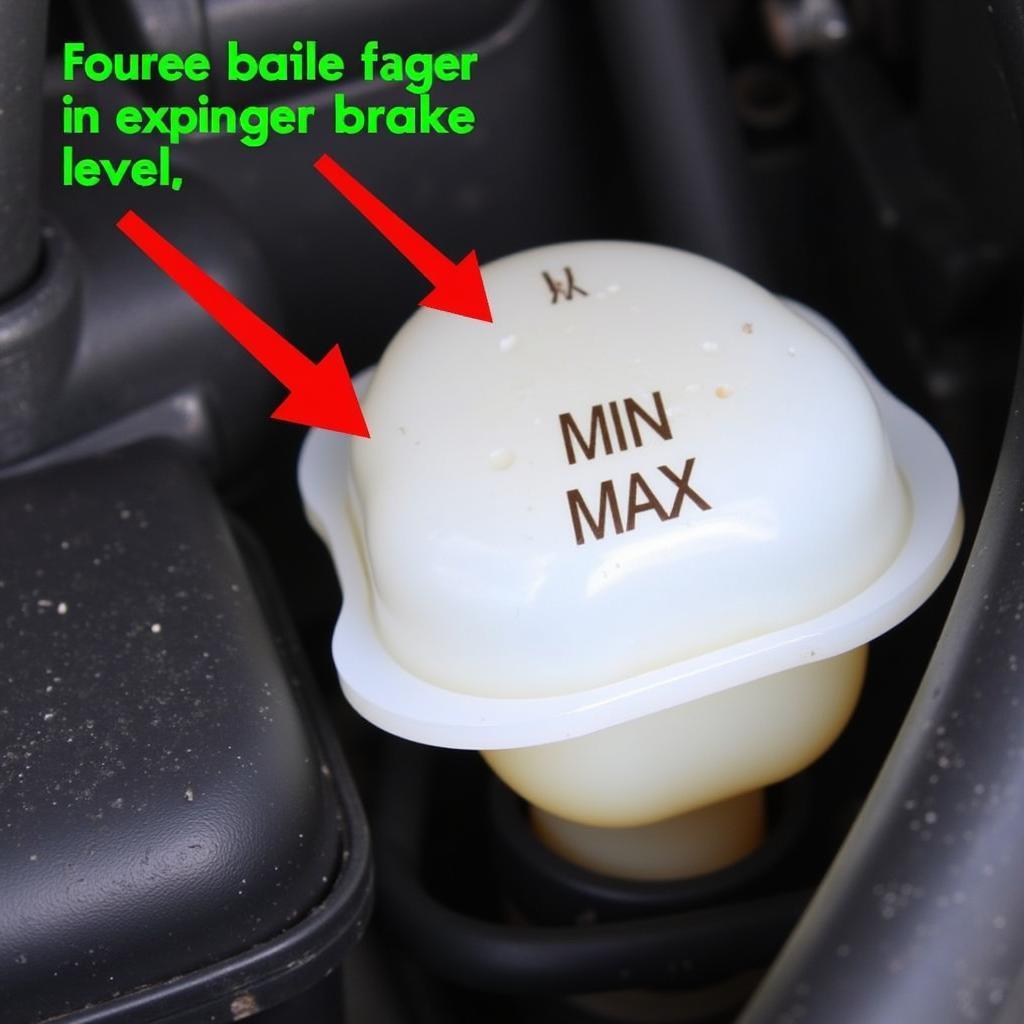Seeing both your brake warning light and service light illuminated on your Saturn dashboard can be unnerving. It typically signifies a potential issue with your braking system that requires immediate attention. This comprehensive guide explores the common causes behind these warning lights and provides potential solutions to get you back on the road safely.
Understanding Your Saturn’s Warning System
Your Saturn, like most modern vehicles, is equipped with a sophisticated onboard diagnostic system. When it detects a problem, it illuminates specific warning lights on the dashboard to alert you. The brake warning light, often a circle with an exclamation mark or the word “BRAKE” inside, signifies a problem within the braking system. The service light, often depicted as a wrench or the word “SERVICE,” typically indicates a required maintenance service.
When both lights activate simultaneously, it often points to a more serious issue within the braking system that requires immediate attention.
Common Causes of Brake Warning and Service Lights
Several factors can trigger your Saturn’s brake warning and service lights to illuminate concurrently:
- Worn Brake Pads: The most common culprit is worn-out brake pads. As your brake pads wear down, the brake fluid level in the master cylinder drops, potentially triggering both warning lights.
- Brake Fluid Leak: A leak in your brake lines or a faulty brake caliper can lead to a loss of brake fluid. This decrease in pressure can trigger the warning lights and significantly compromise your braking ability.
- Faulty ABS System: The Anti-lock Braking System (ABS) is crucial for maintaining control during hard braking. A malfunctioning ABS module or sensor can trigger the warning lights.
- Defective Brake Light Switch: A faulty brake light switch can not only prevent your brake lights from functioning correctly but also interfere with your vehicle’s cruise control and transmission shift interlocks.
- Electrical Issues: Corrosion, loose wiring, or a blown fuse within the braking system’s electrical circuit can also trigger the warning lights.
Diagnosing the Problem
While this guide offers potential causes, it is crucial to remember that it doesn’t replace a professional diagnosis.
If your Saturn’s brake warning and service lights are on, it is essential to take your vehicle to a qualified mechanic as soon as possible.
A mechanic can accurately diagnose the problem by:
- Reading the Diagnostic Trouble Codes (DTCs): Using an OBD-II scanner, a mechanic can retrieve specific error codes stored in your vehicle’s computer, providing insights into the underlying issue.
- Inspecting the Brake System: A visual inspection of the brake lines, calipers, rotors, and pads can reveal leaks, wear and tear, or damage.
- Testing the Brake Fluid: Checking the brake fluid level and condition can determine if a leak or contamination is present.
Potential Solutions and Repair Costs
The solution to your Saturn’s brake warning and service light issue will depend on the underlying cause diagnosed by your mechanic. Here are some potential solutions and their approximate costs:
- Brake Pad Replacement: Replacing worn brake pads is a routine maintenance task. The cost can range from $150 to $300 per axle, depending on the type of brake pads and your location.
- Brake Fluid Flush: If your brake fluid is contaminated or has absorbed moisture, a complete flush is recommended. This service typically costs between $75 and $150.
- Brake Line Repair/Replacement: Fixing a brake fluid leak might involve repairing or replacing a section of the brake line. Costs can vary greatly depending on the extent of the damage, ranging from $100 to $500 or more.
- ABS Sensor/Module Replacement: A faulty ABS sensor might require replacement, costing between $100 and $300 per sensor. Replacing the ABS module is more expensive, potentially costing between $500 and $1000 or more.
- Brake Light Switch Replacement: Replacing a defective brake light switch is a relatively inexpensive fix, typically costing between $50 and $150.
Preventing Future Issues
Taking proactive steps to maintain your Saturn’s braking system can help prevent future problems and ensure your safety on the road:
- Regular Brake Inspections: Get your brakes inspected at least once a year or every 12,000 miles, whichever comes first.
- Timely Brake Pad Replacement: Don’t wait for your brake pads to wear down completely. Replace them as soon as you notice signs of wear or hear squeaking noises.
- Monitor Brake Fluid Level: Regularly check your brake fluid level and top it off if necessary.
- Address Warning Lights Promptly: Never ignore illuminated warning lights on your dashboard. Address them immediately to prevent further damage and costly repairs.
Expert Insights
“Many car owners underestimate the importance of regular brake maintenance,” says John Smith, a certified automotive technician with over 20 years of experience. “Ignoring warning signs like a soft brake pedal or unusual noises can lead to more serious and expensive problems down the line.”
“Remember,” Smith emphasizes, “your brakes are your vehicle’s most crucial safety system. Investing in their proper maintenance is an investment in your safety and the safety of others on the road.”
 Saturn Brake Pad Replacement
Saturn Brake Pad Replacement
Conclusion
Experiencing a brake warning and service light on your Saturn can be concerning. Remember to prioritize your safety by taking your vehicle to a qualified mechanic immediately for a professional diagnosis. By addressing the issue promptly and maintaining your braking system, you can ensure your Saturn remains safe and reliable for miles to come.

